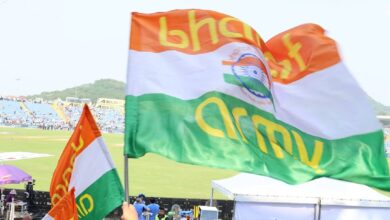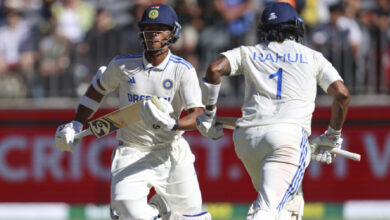Made in India: Why IPL teams aren’t always including 4 foreign players in playing XI

One of the main factors that makes the Indian Premier League bigger and better than other franchise competitions around the world is the overseas star power on display. With Indian players – the top ones are the biggest draw cards in the game – not allowed their board to appear in other leagues, there is anyway a significant difference in the number of eyeballs attracted, and with most of the best international players making a beeline for the IPL, the equation is skewed even more.
But while top overseas stars were considered the lynchpins of teams when the IPL started almost a decade and a half ago, things seem to have changed of late. So much so, that teams don’t think twice before fielding fewer than the four overseas players allowed in the playing XI if strategy demands so.
During the ongoing edition, in the first 29 matches there have been 11 instances of teams fielding fewer than four overseas players – including twice when only two were included. This phenomenon may be less frequent as the tournament enters its middle phase and teams get a better idea about what’s working and what’s not, but playing fewer than the maximum number of foreigners is no longer a taboo or a decision that prompts raised eyebrows.
With the likes of AB de Villiers, Chris Gayle, Jofra Archer and Ben Stokes not part of the IPL this year, and young local talent emerging in droves, teams may be tempted to field upcoming Indian players instead of overseas ones who may take time to get used to local conditions.
Also, with two more teams in the fray from this season, there is more scope for Indian players to make their presence felt. Previously, fast bowling and big hitting used to be skills for which teams used to look towards foreign stars. But with an enviable assembly line of speedsters – both in the national team set-up and the feeder system – and the likes of Ayush Badoni, Tilak Verma, Abhinav Manohar and Rahul Tewatia finding the boundary and going beyond it on a regular basis, there is less reliance on foreign players to make the vital difference in games.
For the #SuperGiants, भौकाल machaana is as easy as swiping!#AbApniBaariHai💪#IPL2022 🏆 #bhaukaalmachadenge #lsg #LucknowSuperGiants #T20 #TataIPL #Lucknow #UttarPradesh #LSG2022 pic.twitter.com/G9q3Eh6poB
— Lucknow Super Giants (@LucknowIPL) April 16, 2022
Former India head coach Gary Kirsten, part of the Gujarat Titans backroom staff this term, has had stints with Delhi Daredevils and Royal Challengers Bangalore earlier. He is well placed to observe how local players have come into their own over the years.
“I do think there’s a real indication that young Indian players are feeling more comfortable in the IPL environment. I think so far this is a tournament of young Indian players. We’ve seen a number of them across the different teams really showcase their skills and are comfortable doing it in the pressurised environment of IPL,” the former South African opener said during The Indian Express Idea Exchange.
Necessity begets success
Some may also argue that not playing the overseas stars, many of whom were acquired at great expense during the auction, points to faulty strategising the wise men of the franchises. But it’s pertinent to remember that several big-name Australian and South African players were unavailable for the first few games. It would have been unfair on the Indians who performed well in their absence to make way when the overseas stars arrived.
It can also be analysed as teams striving to find a good combination. Mumbai Indians, who are yet to win a game this season, started with their full foreign component. After three back-to-back reversals, they suddenly slashed it half. Coming into their fifth game, they had three foreign players, indicating they were still unsure about their best combination.
On the other hand, Gujarat Titans – who sit near the top of the points table – have fielded four foreigners in every game, signifying they know their strongest XI from the very beginning even though this is their first season.
Chennai Super Kings is another team in the wrong half of the table, and part of the problem could be the staleness in the team. It’s the same core, and large, that’s providing the foundation of the team, and no young domestic talent has attracted attention. They played only three foreigners against Lucknow Super Giants, and though they lost despite putting up over 200 on the board, the performances of Robin Uthappa and Shivam Dube ensured that someone like Kiwi Devon Conway didn’t get a look in.
Kolkata Knight Riders have been there or thereabouts too. They started with three overseas players in their first match, but that would have been due to unavailability of Pat Cummins, who can walk into any first-choice XI.
Mumbai Indians have been suffering due to the underperformance of seniors such as skipper Rohit Sharma and Kieron Pollard. Tilak Varma has been impressive, which may have prevented a long-term spot for Singaporean Tim David though Dewald Brevis has shown what he is capable of. Though Daniel Sams has gone for a lot of runs, Riley Meredith has hardly got a look in.
The unavailability of David Warner, Anrich Nortje or Mitchell Marsh meant Delhi Capitals fielded just two foreigners in their season opener. The absence of a set playing eleven may be the reason for their up-and-down results as they have struggled to find four quality overseas names for every match.
It was only in their first match that Punjab Kings fielded one fewer than the number of foreign players allowed, and it was due to the temporary unavailability of Kagiso Rabada. Same was the case with Lucknow Super Giants in their opening fixture.
Rajasthan Royals have been quite flexible in this regard. They have been doing quite well, but have not been averse to experimenting with the number of overseas players in the playing XI. They have fielded three foreigners in two of their five games, with a win and a loss. Their main foreign stars – Jos Buttler, Trent Boult and Shimron Hetmeyer – have been ever-present, unless injured. There is hardly any dinction between Indian and overseas players among the rest.
Fear factor missing
Come to think of it, players such as Chris Jordan, Devon Conway and Adam Milne may have had their moments in international cricket, but still don’t have an impressive body of work in the IPL. The team management may believe that a young Indian may have as good a chance to make an impact if given a chance. Someone like Delhi Capitals’ Mitchell Marsh is always susceptible to injury and takes a long time to return to his best. It’s always tempting to go for an Indian instead, a safer option.
KKR’s Aaron Finch is badly out of form, and it remains to be seen how long a rope is given to the Aussie white-ball skipper. Tim Southee is a proven performer, but his inclusion is dependent on team combination.
Names such as Nathan Ellis, Mitchell Santner, Dominic Drakes, Noor Ahmad, Rahmanullah Gurbaz, Chamika Karunaratne, Kyle Mayers, Riley Meredith, Benny Howell, Nathan Coulter-Nile, Obed McCoy, Daryl Mitchell, Finn Allen, Jason Behrendorff, Sherfane Rutherford, Sean Abbott, Fazalhaq Farooqi, Glenn Philipps and Romario Shepherd don’t sound nearly as intimidating as some of the foreign players who graced the IPL in its initial years. It may be fair to say that most of these players would have been acquired as back-ups just to fill up the squad.
So, is there a case for reducing the maximum number of overseas players in the final XI going ahead? Kirsten feels no.
“The important thing is to make sure that your standard of competition is at its highest. And I think all international players would tell you that the quality of the IPL is as good as anywhere in the world, if not better than anywhere in the world at franchise level,” the 2011 World Cup-winning coach said.
Imports not on duty
Indian franchises are increasingly self-assured about blooding Indian youngsters and not relying on their foreign players if the early season trends are to go . Here are five of 11 such examples of teams fielding fewer than four foreign players in a playing XI:
Match 2: Delhi Capitals included just two in their first game against Mumbai Indians
With several of their first-choice overseas contingent unavailable, DC didn’t have many options. Tim Seifert and Rovman Powell were the two foreigners who played. David Warner, Mitchell Marsh and Anrich Nortje were not there.
Match 3: Punjab Kings played three against Royal Challengers Bangalore
They included Bhanuka Rajapaksa, Odean Smith and Liam Livingstone. The likes of Benny Howell were not considered. Jonny Bairstow and Kagiso Rabada were unavailable.
Match 9: Rajasthan Royals played three against Mumbai Indians
Jos Buttler, Trent Boult and Shimron Hetmyer were enough to get the job done. They even bought Navdeep Saini in place of Nathan Coulter-Nile.
Match 18: Mumbai Indians played just two against RCB. It didn’t work.
They included Dewald Brevis and Kieron Pollard. Players like Daniel Sams, Tim David, Riley Meredith and Tymal Mills were left out.
Match 19: DC played three against Kolkata Knight Riders
David Warner, Rovman Powell and Mustafizur Rahman were in the XI, Seifert was overlooked while Mitchell Marsh and Nortje were unfit.







